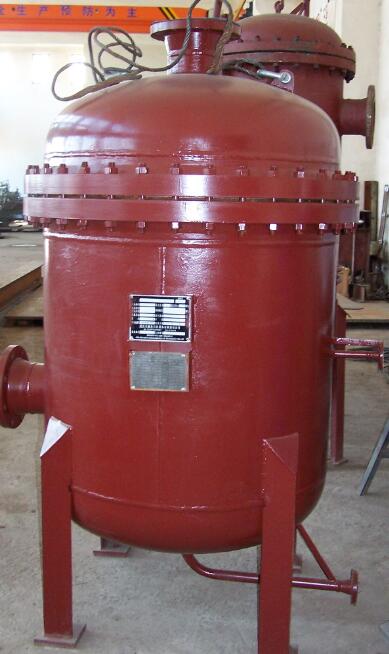HAF offers various types of two-phase separators. The two components are separated from the mixture based on the principle of densities difference between the different components. The filtration/separation efficiency is up to 99.999%.
Classification of two-phase separators:
Horizontal (receiver)
Vertical separators
Separators can be divided into:
Gas-liquid separation
Liquid-solid separation
Gas-solid separation
Horizontal two-phase separator (receiver)
HAF horizontal separators are used for efficient separation of mixtures containing large amounts of gas, liquid and foam. This two-phase separator is suitable for mixtures with a large range of gas/oil ratios.
Vertical two-phase separator
The HAF vertical separator is used for the efficient separation and scrubbing of mixtures with high gas/oil ratios. The upward gas flow rate is balanced by the liquid droplet settling rate and the liquid is then scrubbed from the gas. The liquid is then separated from the gas by a screen or vane mist eliminator.
Comparison of different separator
| Items | Vertical | Horizontal |
| Pro | Easy to clean Small footprint Good control of surge Liquid level control is not critical |
suitable for higher gas velocity, can handle higher gas-oil ratio mixture; Cheaper than vertical separators; less use of field connections; Reduced turbulence and foam. |
| Con | Large separator diameter compared to horizontal separators. Higher price than horizontal separator difficult to ship and high transportation costs |
Requires more space; Liquid level control is critical; Limited space for surge; Difficult to clean (the separator is not suitable for sandy conditions). |
| Suitable for | Low to moderate gas-to-oil ratio and conditions where relatively large amounts of liquid oil are expected to occur | High gas-oil ratio with foam or liquid-liquid separation. Widely applicable to a wide range of operating conditions. |
